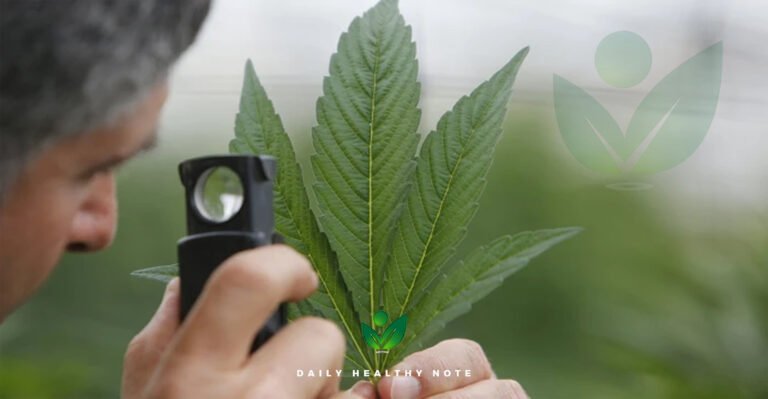Cancer is one of the most formidable challenges in modern medicine, with millions of new cases diagnosed each year. Traditional treatments such as chemotherapy and radiation therapy, while effective, often come with severe side effects.
This has led researchers to explore alternative treatments, and cannabinoids have emerged as a promising option. A recent study titled “Cannabinoids Show Promising Potential in Cancer Treatment,” published in Discover Oncology, provides compelling evidence of the anticancer properties of cannabinoids like Δ9-THC, CBD, and CBG.
Understanding Cannabinoids
Cannabinoids are naturally occurring compounds found in the cannabis plant. The most well-known cannabinoids are Δ9-tetrahydrocannabinol (THC) and cannabidiol (CBD), but the plant contains over 100 different cannabinoids, each with unique properties. Unlike THC, which is psychoactive, CBD does not produce a “high” and has garnered attention for its therapeutic potential.
Mechanisms of Action
The study highlights several mechanisms through which cannabinoids exert their anticancer effects:
-
Induction of Apoptosis Apoptosis, or programmed cell death, is a critical process in maintaining healthy cell turnover. Cancer cells often evade apoptosis, leading to uncontrolled growth. Cannabinoids like THC and CBD have been shown to induce apoptosis in various cancer cell lines. This was demonstrated in a study by Shrivastava et al. (2011), which found that CBD induced apoptosis in breast cancer cells through the generation of reactive oxygen species (ROS) and the activation of caspases.
-
Inhibition of Proliferation Cannabinoids can inhibit the proliferation of cancer cells. Guzmán et al. (2003) reported that THC reduced the growth of glioma cells in vitro and in vivo. This inhibition of cell proliferation is linked to the cannabinoids’ ability to modulate signaling pathways involved in cell cycle regulation.
-
Anti-Angiogenesis Angiogenesis, the formation of new blood vessels, is essential for tumor growth and metastasis. Cannabinoids have been shown to inhibit angiogenesis, thereby restricting the supply of nutrients to the tumor. A study by Blázquez et al. (2003) demonstrated that cannabinoids inhibited VEGF pathways, reducing angiogenesis in glioma cells.
-
Autophagy Stimulation Autophagy is a cellular process that involves the degradation and recycling of cellular components. The study found that cannabinoids stimulate autophagy, which can lead to cell death in cancer cells. Salazar et al. (2009) discovered that THC induced autophagy in glioma cells, promoting cell death through ER stress-related pathways.
Preclinical and Clinical Evidence
Preclinical studies provide a strong foundation for the potential of cannabinoids in cancer treatment. For instance, McAllister et al. (2011) found that CBD inhibited the invasion of lung cancer cells, suggesting its role in preventing metastasis. Furthermore, research by Marcu et al. (2010) showed that a combination of THC and CBD enhanced the antitumor effects in glioblastoma cells. Clinical evidence, though limited, is also promising. A pilot clinical study by Guzmán et al. (2006) reported that THC administered to patients with recurrent glioblastoma multiforme showed a reduction in tumor growth. However, more extensive clinical trials are needed to confirm these findings and establish standardized dosing regimens. For more detailed information, you can refer to the article “Preclinical and Clinical Assessment of Cannabinoids as Anti-Cancer Agents” published in Frontiers in Pharmacology here.
Collaboration Across Borders
The study titled “Cannabinoids Show Promising Potential in Cancer Treatment” is a collaborative effort involving researchers from Pakistan, Portugal, Turkey, Saudi Arabia, and South Korea. This international collaboration underscores the global interest in exploring cannabinoids as potential anticancer agents and highlights the importance of cross-border research in advancing medical science.
Potential and Challenges
While the potential of cannabinoids in cancer treatment is promising, several challenges remain. The legal status of cannabis and its derivatives varies widely across countries, which can hinder research efforts. Additionally, the variability in cannabinoid concentrations in different strains of cannabis makes standardization difficult.
Researchers are also investigating the possible side effects and interactions of cannabinoids with conventional cancer therapies. A comprehensive understanding of these factors is crucial for integrating cannabinoids into mainstream cancer treatment protocols.
Conclusion
The study “Cannabinoids Show Promising Potential in Cancer Treatment” provides compelling evidence that cannabinoids like Δ9-THC, CBD, and CBG may offer a novel approach to cancer therapy. By inducing apoptosis, inhibiting proliferation, and reducing angiogenesis, cannabinoids have shown potential in preclinical and early clinical studies. As research progresses, cannabinoids could become a valuable addition to the arsenal of cancer treatments, offering hope to patients worldwide.
References
-
Shrivastava, A., Kuzontkoski, P. M., Groopman, J. E., & Prasad, A. (2011). Cannabidiol induces programmed cell death in breast cancer cells by coordinating the cross-talk between apoptosis and autophagy. Molecular Cancer Therapeutics, 10(7), 1161-1172. Link
-
Guzmán, M., Duarte, M. J., Blázquez, C., Ravina, J., Castañeda, M. A., Sánchez, C., … & Velasco, G. (2006). A pilot clinical study of Δ9-tetrahydrocannabinol in patients with recurrent glioblastoma multiforme. British Journal of Cancer, 95(2), 197-203. Link
-
McAllister, S. D., Murase, R., Christian, R. T., Lau, D., Zielinski, A. J., Allison, J., … & Desprez, P. Y. (2011). Pathways mediating the effects of cannabidiol on the reduction of breast cancer cell proliferation, invasion, and metastasis. Breast Cancer Research and Treatment, 129(1), 37-47. Link
-
Salazar, M., Carracedo, A., Salanueva, I. J., Hernández-Tiedra, S., Lorente, M., Egia, A., … & Velasco, G. (2009). Cannabinoid action induces autophagy-mediated cell death through stimulation of ER stress in human glioma cells. The Journal of Clinical Investigation, 119(5), 1359-1372. Link
-
Blázquez, C., González-Feria, L., Alvarez, L., Haro, A., Casanova, M. L., & Guzmán, M. (2004). Cannabinoids inhibit the vascular endothelial growth factor pathway in gliomas. Cancer Research, 64(16), 5617-5623. Link










